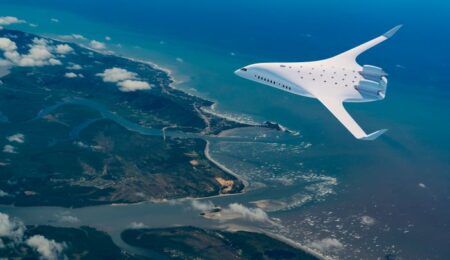The testing is the next major milestone in a two-year program that will culminate in engine certification in 2016 and delivery of the first Boeing 737 MAX in 2017. The engine behaved well and completed multiple aeromechanical test points at various altitudes during the five-hour and 30-minute first flight.
“I continue to be really impressed with the LEAP family,” said chief test pilot Steven Crane. “These engines are demonstrating a maturity that you don’t always see in new products. I think our airline customers are going to be very pleased with this engine.”
The LEAP-1B engine is the exclusive powerplant for the Boeing 737 MAX family. The first engine began ground testing on June 13, 2014, three days ahead of the schedule set when the program was launched in 2011.
“With this major engine milestone and the test results to date we continue to be confident that the LEAP-1B-powered 737 MAX will provide our customers with the most fuel efficient, reliable and maintainable airplane in the single-aisle market,” said Keith Leverkuhn, vice president and general manager, 737 MAX program, Boeing Commercial Airplanes.
“The 737 MAX is on track to deliver 14 percent more fuel efficiency than today’s most efficient Next-Generation 737s and 20 percent more efficiency than the first Next-Generation 737s to enter service.”
Over the next several weeks, the flight test program will encompass a comprehensive test schedule that will gauge engine operability, stall margin, performance, emissions, and acoustics. It will also further validate the advanced technologies incorporated in the engine, including the woven carbon fiber composite fan, the twin-annular, pre-mixing swirler (TAPS) combustor, ceramic matrix composite shrouds in the high-pressure turbine and titanium aluminide blades in the low-pressure turbine.
There are currently a total of 26 LEAP engines (all three models) on test, with 10 additional engines in various stages of final assembly.
“The LEAP engine has been doing incredibly well throughout a very rigorous ground and flight test program,” said Allen Paxson, CFM executive vice president. “All of these engines are heavily instrumented, many of them deliberately deteriorated, to calibrate performance and durability in the most extreme conditions.
“We have successfully completed several major certification tests, including icing, flocking bird ingestion, large-bird ingestion, and even a fan blade-out test. We have passed them all and the results are right in line with what we predicted and where we wanted this engine to be. We are on track to meet all of our commitments at entry into service.”
This LEAP-1B engine is part of the most extensive ground and flight test certification program in CFM’s history. The total program, which encompasses all three LEAP engine variants, includes 28 ground and CFM flight test engines, along with a total of 32 flight test engines for the aircraft manufacturers. Over a three-year span, these engines will accumulate approximately 40,000 engine cycles leading up to entry into service. By the time this engine enters service, CFM will have simulated more than 15 years of airline service with 60 different engine builds.
In 2011, Boeing selected the LEAP-1B as the sole powerplant for its new 737 MAX, extending a more than 30-year relationship. CFM has been the only engine provider for the 737 aircraft family since the 737 Classic entered service in 1984.
May 19, 2015




